Abstract
An analogue of ADP was made in which the terminal phosphono-oxy group, -O-PO(OH)2, has been replaced by the arsonomethyl group, -CH2-AsO(OH)2. This compound cannot form a stable analogue of ATP because anhydrides of arsonic acids are rapidly hydrolysed, so that any enzyme that phosphorylates ADP and accepts this analogue as a substrate should release orthophosphate in its presence. The analogue proves to be a poor substrate for 3-phosphoglycerate kinase (V/Km is diminished by a factor of 10(2)-10(3)) and a very poor substrate for pyruvate kinase (V/Km is diminished by a factor of 10(5)-10(6)). No substrate action was detected with adenyl kinase and creatine kinase.
Full text
PDF
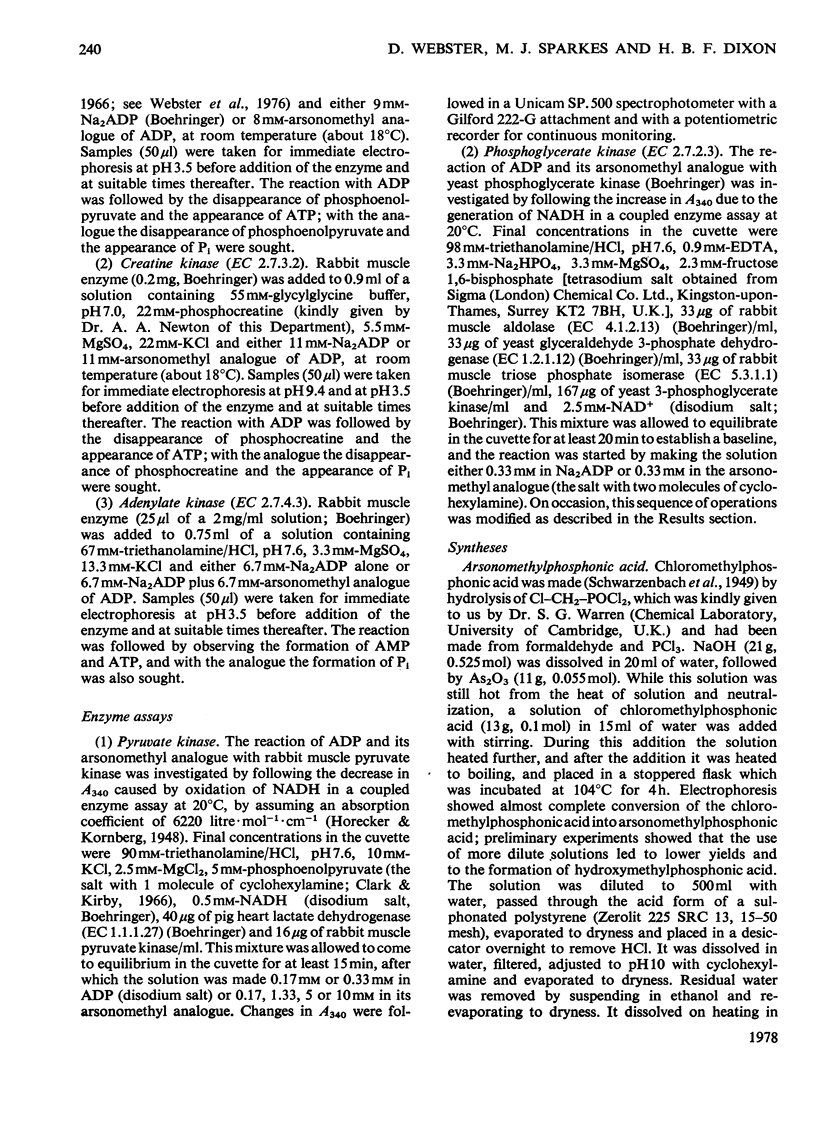
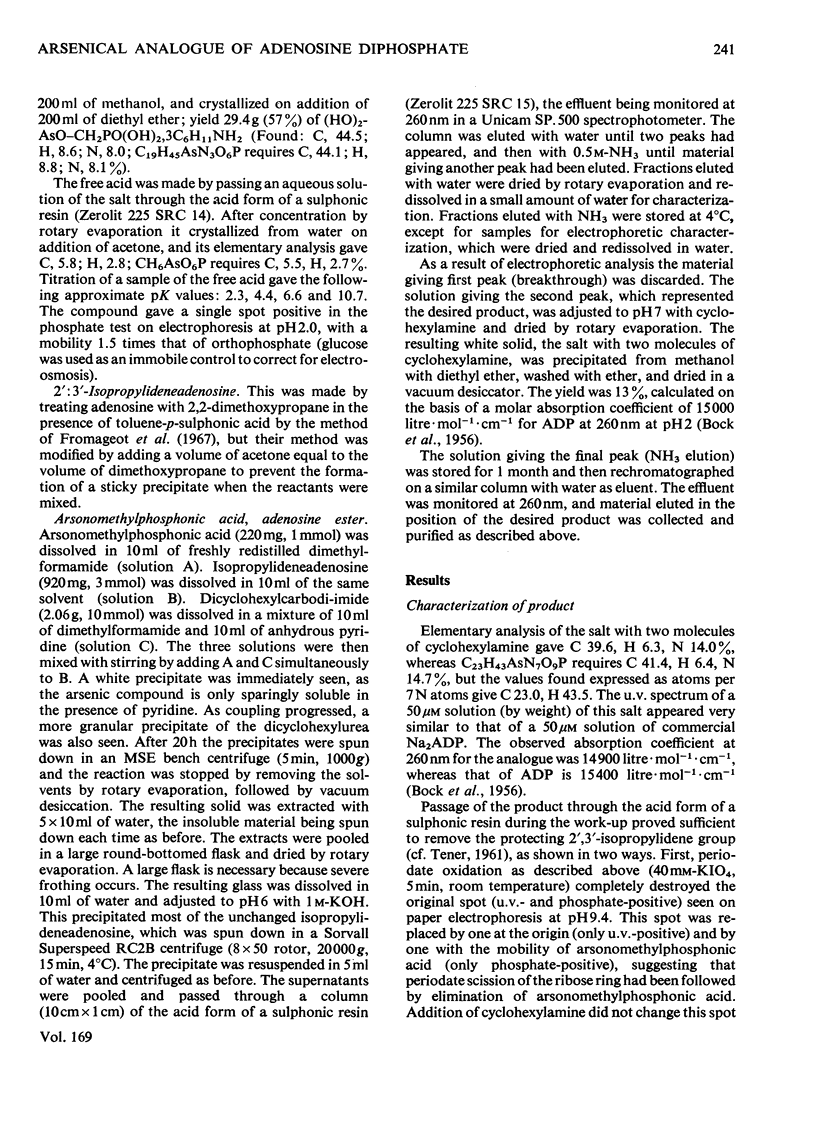
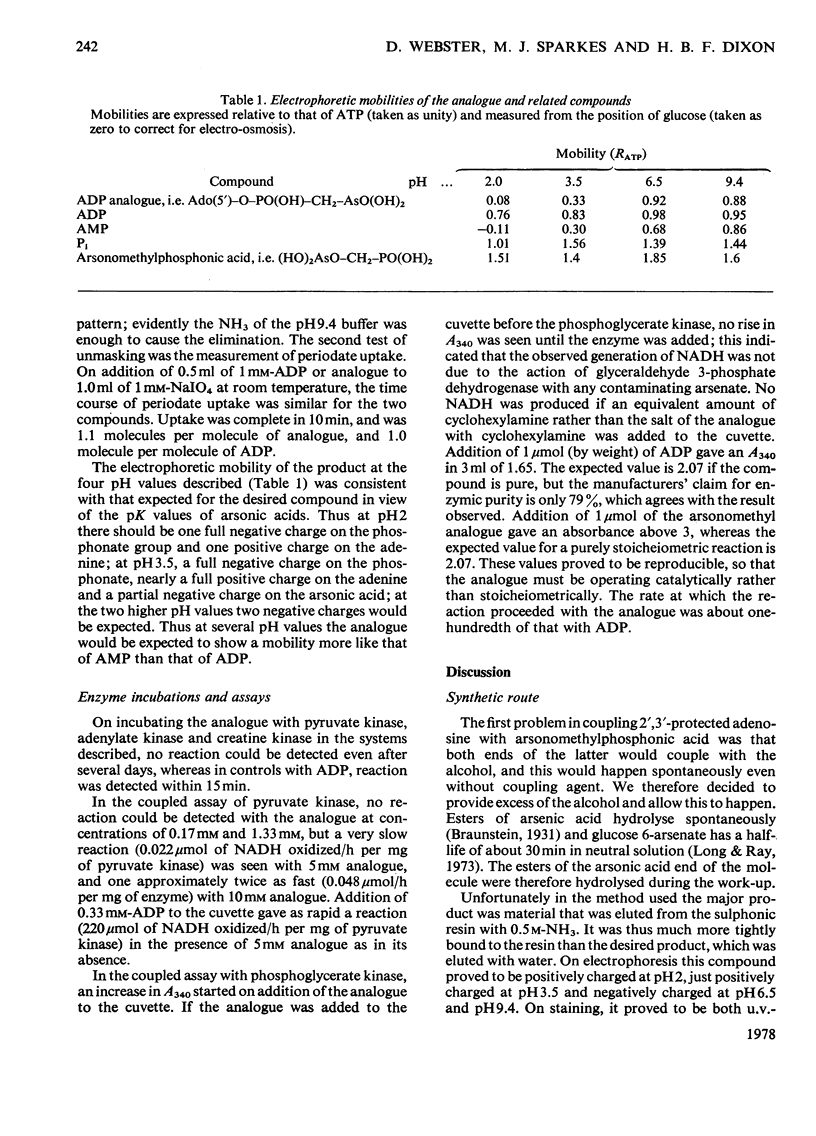
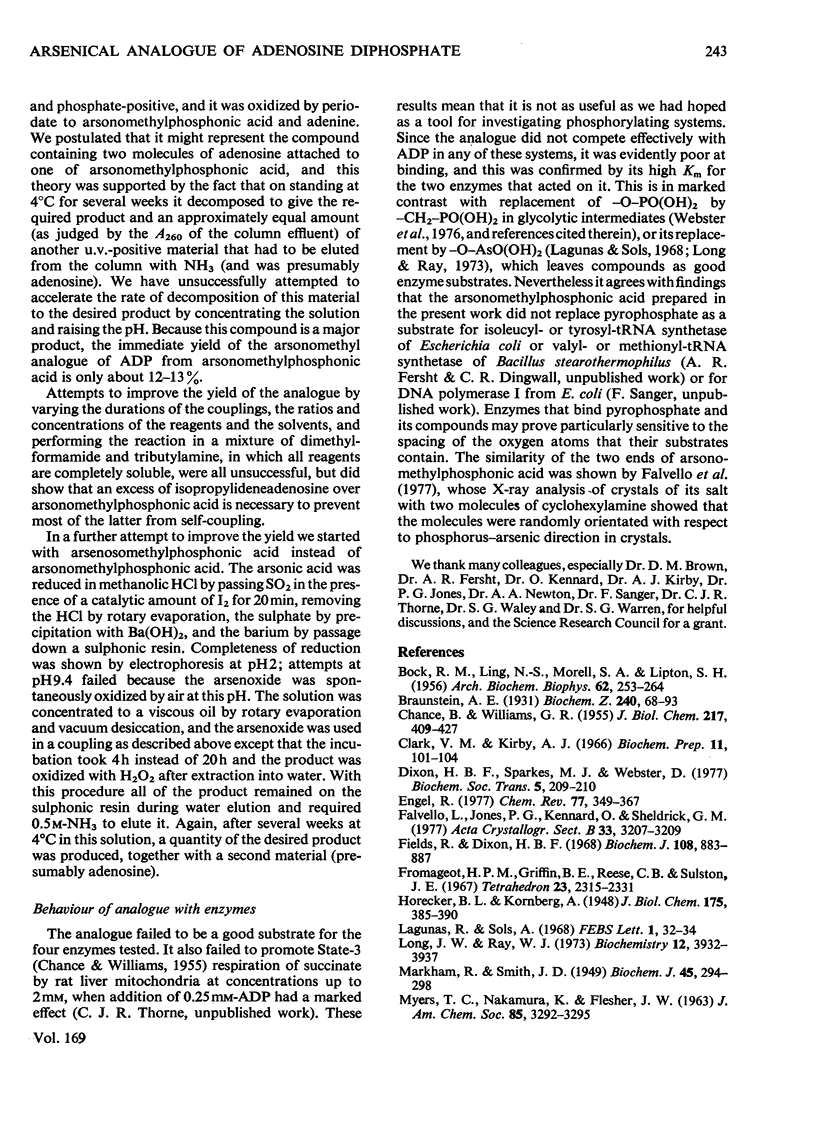
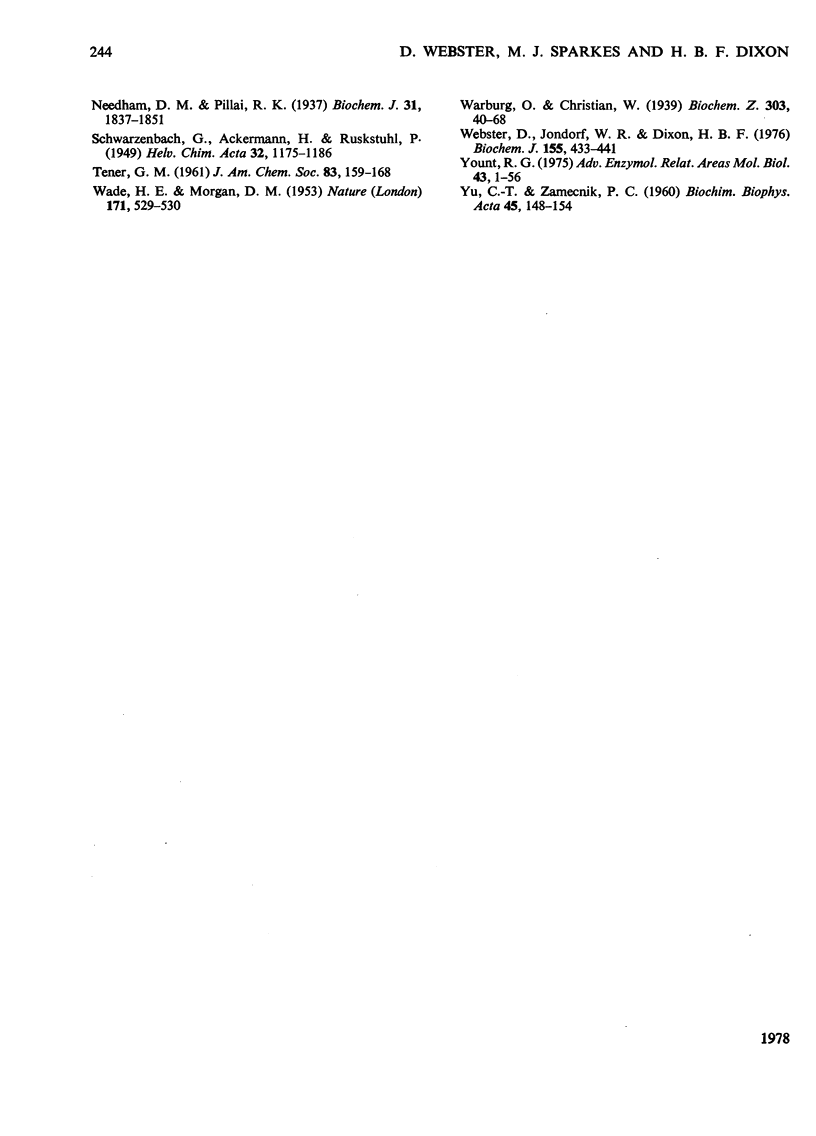
Selected References
These references are in PubMed. This may not be the complete list of references from this article.
- BOCK R. M., LING N. S., MORELL S. A., LIPTON S. H. Ultraviolet absorption spectra of adenosine-5'-triphosphate and related 5'-ribonucleotides. Arch Biochem Biophys. 1956 Jun;62(2):253–264. doi: 10.1016/0003-9861(56)90123-0. [DOI] [PubMed] [Google Scholar]
- CHANCE B., WILLIAMS G. R. Respiratory enzymes in oxidative phosphorylation. III. The steady state. J Biol Chem. 1955 Nov;217(1):409–427. [PubMed] [Google Scholar]
- Dixon H. B., Sparkes M. J., Webster D. Uncoupling agents: arsenical analogues of pyrophosphate and their compounds. Biochem Soc Trans. 1977;5(1):209–210. doi: 10.1042/bst0050209. [DOI] [PubMed] [Google Scholar]
- Fields R., Dixon H. B. A spectrophotometric method for the microdetermination of periodate. Biochem J. 1968 Aug;108(5):883–887. doi: 10.1042/bj1080883. [DOI] [PMC free article] [PubMed] [Google Scholar]
- Fromageot H. P., Griffin B. E., Reese C. B., Sulston J. E. The synthesis of oligoribonucleotides. 3. Monoacylation of ribonucleosides and derivatives via orthoester exchange. Tetrahedron. 1967 May;23(5):2315–2331. doi: 10.1016/0040-4020(67)80068-1. [DOI] [PubMed] [Google Scholar]
- Lagunas R., Solis A. Arsenate induced activity of certain enzymes on their dephosphorylated subtrates. FEBS Lett. 1968 Jul;1(1):32–34. doi: 10.1016/0014-5793(68)80011-0. [DOI] [PubMed] [Google Scholar]
- Long J. W., Ray W. J., Jr Kinetics and thermodynamics of the formation of glucose arsenate. Reaction of glucose arsenate with phosphoglucomutase. Biochemistry. 1973 Sep 25;12(20):3932–3937. doi: 10.1021/bi00744a023. [DOI] [PubMed] [Google Scholar]
- MARKHAM R., SMITH J. D. Chromatographic studies of nucleic acids; a technique for the identification and estimation of purine and pyrimidine bases, nucleosides and related substances. Biochem J. 1949;45(3):294–298. doi: 10.1042/bj0450294. [DOI] [PMC free article] [PubMed] [Google Scholar]
- Needham D. M., Pillai R. K. The coupling of oxido-reductions and dismutations with esterification of phosphate in muscle. Biochem J. 1937 Oct;31(10):1837–1851. doi: 10.1042/bj0311837. [DOI] [PMC free article] [PubMed] [Google Scholar]
- WADE H. E., MORGAN D. M. Detection of phosphate esters on paper chromatograms. Nature. 1953 Mar 21;171(4351):529–530. doi: 10.1038/171529a0. [DOI] [PubMed] [Google Scholar]
- Webster D., Jondorf W. R., Dixon H. B. Phosphonomethyl analogues of hexose phosphates. Biochem J. 1976 May 1;155(2):433–441. doi: 10.1042/bj1550433. [DOI] [PMC free article] [PubMed] [Google Scholar]
- YU C. T., ZAMECNIK P. C. A hydrolytic procedure for ribonucleosides and its possible application to the sequential degradation of RNA. Biochim Biophys Acta. 1960 Dec 4;45:148–154. doi: 10.1016/0006-3002(60)91435-9. [DOI] [PubMed] [Google Scholar]
- Yount R. G. ATP analogs. Adv Enzymol Relat Areas Mol Biol. 1975;43:1–56. doi: 10.1002/9780470122884.ch1. [DOI] [PubMed] [Google Scholar]


